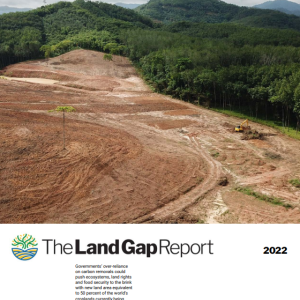
Current climate mitigation pledges made as part of the United Nations Framework Convention on Climate Change rely on unrealistic amounts of land-based carbon sequestration, according to this report. 1.2 billion hectares of land would be needed - almost as much as the current global extent of cropland - and there could be significant negative impacts on food production, sustainable livelihoods for smallholder farmers, and indigenous peoples’ rights.
The report makes four main recommendations for national policymakers:
- Countries should seek greater clarity over the extent, use and ownership of land relied upon in their national climate mitigation pledges.
- Prioritise protecting and restoring existing primary ecosystems instead of focusing on tree planting, because the climate benefits of reforestation are relatively small within the critical time period for limiting climate warming (assumed to be up to 2050). (See page 45 of the original report for an illustration of the effects of tree planting on atmospheric CO2.)
- Ensure that land-based climate mitigation strengthens the rights of indigenous peoples, other human rights, livelihoods and food sovereignty.
- Promote strategies such as agroecology that can protect human rights while restoring ecosystems services through diverse food systems.
The report was produced by the University of Melbourne, Griffith University Climate Action Beacon, Lund University, the University of Copenhagen, Bolivian Catholic University San Pablo, Third World Network, the Center for International Forestry Research and the Rights and Resources Initiative.
Read the full report, The Land Gap Report 2022, here or here (PDF link). See also the TABLE explainer What is land use and land use change?







Post a new comment »